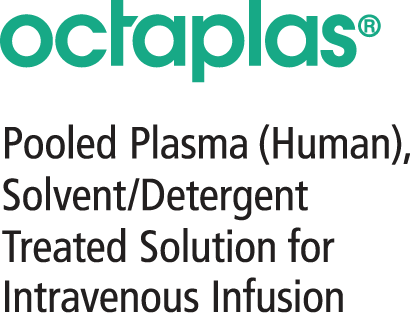Optimized Plasma Production Process
Process designed to maintain coagulation factors and inhibitors1,2*
| Pre-virus Inactivation Area | Optimized integration of pooling 630 to 1,520 single units of fresh frozen plasma (FFP) |
|---|---|
| Fast thawing of the high-quality FFP | |
| Cell and cell debris removal by filtration [1.0 μm] | |
| S/D treatment (1% Tri[n- butyl] phosphate [TNBP]/1% Octoxynol-9) | |
| Post-virus Inactivation Area | Liquid-phase extraction of TNBP |
| Clear filtration (0.45 μm) | |
| Solid-phase extraction of Octoxynol-9 | |
| Affinity ligand chromatography for specific prion capture † | |
| Sterile filtration (0.2 μm) | |
| Aseptic Area | Aseptic filling |
| Labeling and vacuum sealing | |
| Freezing (≤-60oC) and storage (≤-30oC) | |
| Full quality control and release | |
*Thrombosis can occur due to low levels of protein S. Excessive bleeding due to hyperfibrinolysis can occur
due to low levels of alpha2-antiplasmin also known as plasmin inhibitor.
†The effectiveness of this step in removal of prion infectivity from the product has not been established.2
Octapharma’s manufacturing process sets the standard for safety in plasma collection and production
References:
- Octapharma. Data on file; 2013.
- Octaplas Full Prescribing Information. Paramus, NJ: Octapharma; rev 2021.
